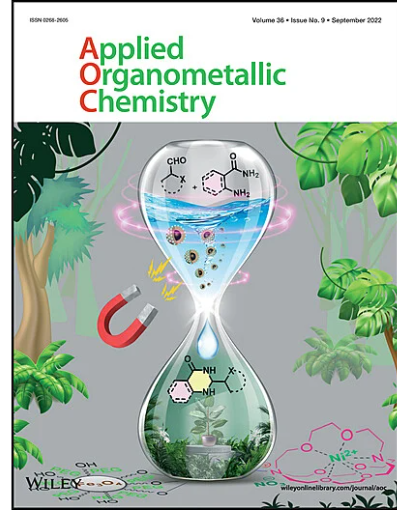Coating MOF Layer on Fe3O4 Nanoparticles Towards Enhancing Photocatalysis Activation of Peroxydisulfate via Layer Thickness Control
IF 3.7
2区 化学
Q2 CHEMISTRY, APPLIED
引用次数: 0
Abstract
As the photocatalytic layer, metal organic frameworks (MOFs) with thickness control were coated on the surface of Fe3O4 nanoparticles to investigate the influence of photocatalysis on the activation of peroxydisulfate to degrade antibiotic pollutants. A suitable thickness of MOF layer can not only enhance the adsorption of the substrate molecules on the composite catalyst but also provide optimized electron transfer distance and path, which is conducive to improving the efficiency of electron–hole separation, thereby enhancing the activation of peroxydisulfate and the degradation efficiency of pollutants.
求助全文
约1分钟内获得全文
求助全文
来源期刊

Applied Organometallic Chemistry
化学-无机化学与核化学
CiteScore
7.80
自引率
10.30%
发文量
408
审稿时长
2.2 months
期刊介绍:
All new compounds should be satisfactorily identified and proof of their structure given according to generally accepted standards. Structural reports, such as papers exclusively dealing with synthesis and characterization, analytical techniques, or X-ray diffraction studies of metal-organic or organometallic compounds will not be considered. The editors reserve the right to refuse without peer review any manuscript that does not comply with the aims and scope of the journal. Applied Organometallic Chemistry publishes Full Papers, Reviews, Mini Reviews and Communications of scientific research in all areas of organometallic and metal-organic chemistry involving main group metals, transition metals, lanthanides and actinides. All contributions should contain an explicit application of novel compounds, for instance in materials science, nano science, catalysis, chemical vapour deposition, metal-mediated organic synthesis, polymers, bio-organometallics, metallo-therapy, metallo-diagnostics and medicine. Reviews of books covering aspects of the fields of focus are also published.
 求助内容:
求助内容: 应助结果提醒方式:
应助结果提醒方式:


